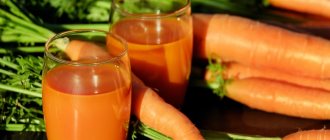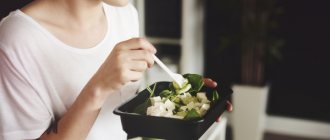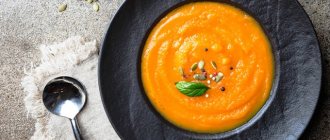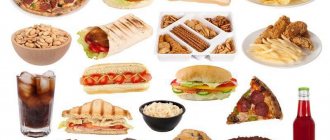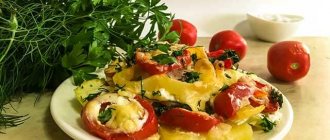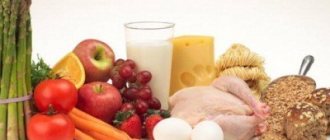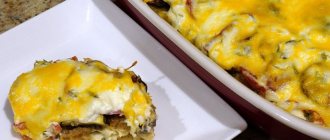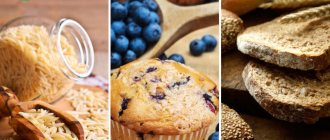General rules
Pancreatitis is an inflammatory disease of the pancreas.
The causes of its damage are varied: obstruction (blockage) of the pancreatic duct, toxic poisoning, exposure to drugs, vascular disorders, infectious and parasitic diseases, trauma. There are acute and chronic pancreatitis. Acute pancreatitis is based on enzymatic damage to the pancreas. Often occurs when taking medications ( methyldopa , azathioprine , 5-aminosalicylates , tetracyclines , furosemide , cimetidine , metronidazole ). In half of the cases, the cause is cholelithiasis, and 25% are associated with alcohol abuse.
Symptoms and treatment of the disease depend on the degree of damage to the gland and intoxication. Mild degree ( serous edema ) is characterized by moderate pain, single vomiting, nausea and, in general, satisfactory condition of the patient.
The average degree of intoxication (fine-focal necrosis of the gland) is characterized by persistent pain in the epigastrium, repeated vomiting, pallor of the skin, and a rise in temperature.
Severe degree (widespread necrosis of the gland) is manifested by painful vomiting, severe pain and severe general condition. Jaundice and symptoms of peritonitis often appear .
Treatment solves the following problems:
- combating shock and toxemia ;
- elimination of pain and spasm;
- suppression of the activity of glandular enzymes (hunger, proton pump inhibitors, aspiration of gastric contents).
Patients with severe forms require infusion therapy and continuous feeding with tubes (enteral nutrition mixtures).
Chronic pancreatitis is a long-term, progressive disease and each episode of exacerbation causes the replacement of pancreatic tissue with fibrous tissue. As a result, exocrine and endocrine failure of the organ develops. Signs of exocrine insufficiency are steatorrhea and manifestations of malnutrition (weight deficiency, calcium metabolism disorders).
Therapeutic nutrition (Diet 5P according to Pevzner) plays an important role at all stages of the disease and helps reduce stasis in the ducts, suppress hyperenzymemia , and reduce excitability of the gallbladder. For symptoms of pancreatitis, treatment with Diet No. 5P has a positive effect not only in the acute period. In a chronic course, it helps to improve metabolic processes in the pancreas, restore its function and the patient’s impaired nutrition, and helps prevent relapses and progression of the disease.
Allowed foods in the first week of the diet for pancreatitis
Basic Diet 5 for pancreatitis is slightly modified and called Diet 5P . In acute and exacerbation of chronic disease, it has a number of features, and the leading principles of diet therapy for pancreatitis are:
- hunger during the period of pronounced clinical manifestations and autolytic processes in the pancreas (only parenteral nutrition is provided);
- the transition to nutritious nutrition is carried out as soon as possible (since the patient needs nutritious protein);
- gradual expansion of the diet by including new foods and dishes;
- when expanding the diet, a gradual increase in the volume and calorie content of food is carried out;
- compliance with maximum mechanical and chemical sparing of the pancreas.
Diet Table number 5 for pancreatitis is determined by the patient’s condition and depends on its severity, and therefore has 2 options.
The first option is indicated for acute pancreatitis and a sharp exacerbation of chronic pancreatitis. The nutrition of this table creates maximum rest for the pancreas and helps eliminate pain. This most gentle diet is prescribed after fasting days from the third day of the disease, but since it does not correspond to physiological nutritional standards and human needs, it is prescribed for 3-7 days. It is characterized by a low-calorie diet containing proteins - 60-70 g, fats - 50 g and carbohydrates - 200-250 g.
Vegetables allowed for pancreatitis
Frequent meals (up to 8 times) and small portions (from 100 to 300 g) are recommended. All products are boiled and have a semi-liquid consistency, and by day 5-6 the patient is allowed to eat semi-viscous food.
Since liquid and carbohydrate foods are the least stimulants of pancreatic and gastric secretion, after hunger they start eating with carbohydrates:
- slimy soups based on various cereals (millet and corn cereals are excluded) or vegetable broths;
- mashed liquid porridge with water;
- weak tea with sugar;
- jellies, jellies and mousses made from fruit juice with xylitol;
- vegetable purees without oil (potato, carrot, pumpkin, squash) and steamed vegetable puddings;
- pureed dried fruit compotes;
- white, yesterday's bread, dry biscuits and crackers.
1-2 days after carbohydrate foods, it is allowed to introduce protein foods:
- cream soup made from boiled meat;
- 1-2 eggs in the form of a steam omelet, soft-boiled and in the form of a protein omelet;
- soufflé, steam cutlets, dumplings from beef, chicken, fish, turkey (before cooking, meat is freed from fat, tendons, fish and chicken from skin);
- curd paste and soufflé, steam curd puddings made from unleavened cottage cheese (preferably calcined);
- butter - in ready-made dishes; vegetable oil is not yet included in the diet.
After acute symptoms are relieved and pain is reduced, as the digestive function of the gastrointestinal tract improves, the diet is gradually expanded and the 5P Diet according to Pevzner is prescribed, the second option, which is also indicated for mild exacerbation of chronic pancreatitis. It is recommended for a long time (up to a year) and is designed to prevent exacerbations in the future. It also preserves the principles of thermal, mechanical and chemical sparing, which reduces nutritional stimulation of the diseased organ. All dishes are boiled or steamed, first consumed in pureed form, and a little later - chopped.
Main characteristics
- The protein content has been increased compared to the first option, as well as the amount of fat and simple carbohydrates. However, the total amount of fat is no more than 80 g, and they are introduced gradually from the third to keep the patient on this diet option.
- If the digestion of protein foods worsens, it is possible to temporarily reduce the amount of protein and increase carbohydrates.
- Dishes are predominantly boiled and steamed, not only in pureed, but also chopped form; the transition from pureed to chopped dishes is also carried out gradually.
- The amount of salt is limited (6-8 g).
- Extractive substances and coarse fiber are excluded. To further reduce extractive substances, cook the meat in small pieces (100 g each), draining the first water after 10 minutes of cooking. The meat is used as a semi-finished product for chopped dishes, puddings, and soufflés.
- Hot and excessively cold foods are not allowed.
- Fractional meals (5-6 times a day) in small portions.
- Large meals are prohibited.
Depending on the severity of the phenomena and concomitant diseases of the gastrointestinal tract, food can be used in pureed or unmashed form. If the course of the disease is favorable, the pureed version is prescribed on average for up to 2 months, and then the degree of grinding of the products is reduced and the volume of food is gradually increased. If their health worsens, they return to the first version of the table with reduced energy value. During an exacerbation, rest for the digestive organs also ensures a sharp limitation of foods with juice and choleretic effects: fresh fruits and vegetables, juices, vegetable oil, sugar, jam, honey and egg yolks.
Fruits and berries allowed for pancreatitis
In the presence of constipation, the basic pancreatic diet changes - the amount of vegetables and fruits increases, the content of carbohydrates decreases (mainly easily digestible to avoid fermentation and bloating).
The tendency of chronic pancreatitis to progress, the presence of periodic pain and dyspeptic syndrome entails the need for constant adherence to a diet. Stopping alcohol consumption is of great importance.
What is the 5p diet
Dietary nutrition begins no earlier than on the fourth day after relapse of the disease. For the first three days of aggravation, you should adhere to a complete fast.
Diet 5p for pancreatitis of the pancreas is prescribed simultaneously with drug intervention. The meaning of this diet implies an absolute rejection of many foods that can aggravate the patient’s condition.
Products used for cooking are crushed or pureed, and steamed or boiled. In this way, an increase in protein is achieved, the level of carbohydrates, fats and substances with extractive characteristics, with a high level of hard cellulose, is reduced, activating the secretions of the digestive glands.
The 5p diet consists of two parts. There are no particular differences between them. It’s just that the first part is more gentle and soft, not allowing the use of some products that are already allowed in the second part of the 5p diet.
Diet 5p (first part)
It is recommended from 3-4 days, after the increased activity of the disease has been stopped, and the patient’s well-being has begun to noticeably improve.
Diet 5p for acute pancreatitis, more precisely, its first option, has a low energy indicator. The amount of protein is necessary, carbohydrates and fats are small.
All food in this diet should have a watery or semi-watery consistency. It involves frequent meals (at least 5-6 times a day), that is, you need to eat food every 3-4 hours.
Diet 5p (second part)
It does not have such a strict limitation compared to the first part. It is prescribed to patients during the period of recovery from a serious condition and during the chronic course of the disease. Its main task is to maintain the gastrointestinal tract in a stable state, preventing any exacerbations of pancreatitis.
The energy indicator is low. The amount of protein, vitamins and lipotropic substances is much higher than in the first part of the diet table. The presence of carbohydrates, fats, heavy cellulose, essential oils, salt, and unnecessary ingredients is limited. Does not allow fried foods or those foods that can cause excessive gas formation or fermentation in the gastrointestinal tract.
Authorized Products
The 5P diet for pancreatitis includes:
- Potatoes, pumpkin, carrots, zucchini, green peas, cauliflower and beets can be eaten boiled or grated. After a while, if well tolerated, it is allowed to eat raw grated carrots and pumpkin, tomatoes and cucumbers.
- Cereals are preferable to buckwheat, rice, semolina, oatmeal and oat flakes. Porridges are boiled in water and ground, resulting in a semi-viscous consistency. You can make semolina and rice souffle, as well as porridge from buckwheat and rice flour, which speeds up the cooking process.
- Typically, pearl barley, millet, corn and barley cereals are less tolerated by patients, and they are limited in their diet.
- Soups prepared only in vegetable broths with pureed vegetables. You can prepare puree soups and cream soups, milk soups (milk is diluted with water). You can put cereals in soups (semolina, rice, rolled oats, but they are good to boil or puree). It is allowed to chop vegetables (potatoes, carrots, pumpkin, zucchini) very finely, but they cannot be fried to season soups.
- Soups are seasoned with sour cream, milk, cream, butter or simply dried flour.
- Lean beef, veal, rabbit, chicken. The meat of young animals and birds (veal, chickens) is consumed sparingly due to its high purine content. Meat is recommended boiled and steamed and only chopped products (cutlets, soufflé, meatballs, meatballs, quenelles). Boiled chicken and tender rabbit meat and beef can be eaten in pieces. Puree and soufflé are prepared from boiled poultry pulp, previously crushed.
- Low-fat fish, steamed and boiled, in the form of cutlets and pieces. The ideal choice would be cod, pike perch, hake, carp, pollock, perch, pike, blue whiting. They cook fish whole carcasses or portioned pieces. Poached fish (cooked in a saucepan with a small amount of water) is not allowed, since it contains more extractive substances than boiled fish.
- Wheat bread (grades I and II) is only allowed if it is stale, in order to prevent intestinal bloating.
- The diet is expanded with the introduction of savory cookies.
- Low-fat dairy products: kefir, acidophilus, yogurt. Milk is poorly tolerated, so it is allowed to be added to dishes (omelettes, cereals, sauces, soups). You can eat half-fat cottage cheese in its natural form and as part of casseroles, soufflés, and puddings. Sour cream is used only as a seasoning for dishes. It is allowed to eat mild cheese, but in grated form. For calcium deficiency, calcined cottage cheese is indicated.
- Omelettes are predominantly protein; soft-boiled eggs are allowed (1 piece per day).
- You can use sauces based on vegetable broth and mucous broth of cereals with the addition of sour cream and milk. The flour is not fried when preparing them.
- Ripe sweet baked apples. You can make boiled fruits and berries, jellies, jelly and mousses. Dried fruits are used pureed. The fruits are used to make jellies and mousses using xylitol. You can eat marshmallows and jelly marmalade. Raw fruits and pureed berries are allowed.
- After an exacerbation, fats are gradually introduced into the diet, first - butter in porridge and purees (15-20 g per day), and then - refined sunflower oil (5-15 g).
- Drinks: weak tea with lemon, sweet fruit juices diluted with water, rosehip infusion, compotes of fresh and dry fruits (pears, apples, apricots), still table water. You can add xylitol to tea. Dried fruit compotes and carrot juice are useful for patients with potassium deficiency.
Table of permitted products
| Proteins, g | Fats, g | Carbohydrates, g | Calories, kcal | |
Vegetables and greens | ||||
| zucchini | 0,6 | 0,3 | 4,6 | 24 |
| broccoli | 3,0 | 0,4 | 5,2 | 28 |
| cauliflower | 2,5 | 0,3 | 5,4 | 30 |
| potato | 2,0 | 0,4 | 18,1 | 80 |
| carrot | 1,3 | 0,1 | 6,9 | 32 |
| cucumbers | 0,8 | 0,1 | 2,8 | 15 |
| tomatoes | 0,6 | 0,2 | 4,2 | 20 |
| pumpkin | 1,3 | 0,3 | 7,7 | 28 |
Fruits | ||||
| apples | 0,4 | 0,4 | 9,8 | 47 |
Nuts and dried fruits | ||||
| dried apricots | 5,2 | 0,3 | 51,0 | 215 |
| dried apricots | 5,0 | 0,4 | 50,6 | 213 |
| prunes | 2,3 | 0,7 | 57,5 | 231 |
Cereals and porridges | ||||
| buckwheat (kernel) | 12,6 | 3,3 | 62,1 | 313 |
| semolina | 10,3 | 1,0 | 73,3 | 328 |
| oat groats | 12,3 | 6,1 | 59,5 | 342 |
| rice | 6,7 | 0,7 | 78,9 | 344 |
Bakery products | ||||
| wheat bread | 8,1 | 1,0 | 48,8 | 242 |
Confectionery | ||||
| jam | 0,3 | 0,2 | 63,0 | 263 |
| jelly | 2,7 | 0,0 | 17,9 | 79 |
| marshmallows | 0,8 | 0,0 | 78,5 | 304 |
| fruit and berry marmalade | 0,4 | 0,0 | 76,6 | 293 |
| paste | 0,5 | 0,0 | 80,8 | 310 |
| Maria cookies | 8,7 | 8,8 | 70,9 | 400 |
Raw materials and seasonings | ||||
| honey | 0,8 | 0,0 | 81,5 | 329 |
| sugar | 0,0 | 0,0 | 99,7 | 398 |
Dairy | ||||
| kefir 1.5% | 3,3 | 1,5 | 3,6 | 41 |
| curdled milk 1% | 3,0 | 1,0 | 4,1 | 40 |
| acidophilus 1% | 3,0 | 1,0 | 4,0 | 40 |
Cheeses and cottage cheese | ||||
| cottage cheese 1% | 16,3 | 1,0 | 1,3 | 79 |
| cottage cheese 1.8% (low-fat) | 18,0 | 1,8 | 3,3 | 101 |
Meat products | ||||
| beef | 18,9 | 19,4 | 0,0 | 187 |
| rabbit | 21,0 | 8,0 | 0,0 | 156 |
Bird | ||||
| boiled chicken breast | 29,8 | 1,8 | 0,5 | 137 |
| boiled turkey fillet | 25,0 | 1,0 | — | 130 |
Eggs | ||||
| chicken eggs | 12,7 | 10,9 | 0,7 | 157 |
Fish and seafood | ||||
| flounder | 16,5 | 1,8 | 0,0 | 83 |
| pollock | 15,9 | 0,9 | 0,0 | 72 |
| blue whiting | 16,1 | 0,9 | — | 72 |
| cod | 17,7 | 0,7 | — | 78 |
| hake | 16,6 | 2,2 | 0,0 | 86 |
| pike | 18,4 | 0,8 | — | 82 |
Oils and fats | ||||
| butter | 0,5 | 82,5 | 0,8 | 748 |
| sunflower oil | 0,0 | 99,9 | 0,0 | 899 |
Non-alcoholic drinks | ||||
| water | 0,0 | 0,0 | 0,0 | — |
| mineral water | 0,0 | 0,0 | 0,0 | — |
Juices and compotes | ||||
| apricot juice | 0,9 | 0,1 | 9,0 | 38 |
| carrot juice | 1,1 | 0,1 | 6,4 | 28 |
| peach juice | 0,9 | 0,1 | 9,5 | 40 |
| pumpkin juice | 0,0 | 0,0 | 9,0 | 38 |
| rose hip juice | 0,1 | 0,0 | 17,6 | 70 |
| * data is per 100 g of product | ||||
Recipes for the healthiest dietary dishes
Dietary dishes made from cauliflower can be very diverse. There are salads, soups, main dishes, and even desserts. And you can prepare them quickly and tasty by reading the detailed recipes presented below. Don't deny yourself the pleasure of enjoying healthy and delicious food.
Recipe 1. Cabbage and cheese casserole
Approximate calorie content per 100g is 67 kcal.
To prepare this dish, which will appeal to both children and adults, take:
- 600g cauliflower;
- 110-120 ml low-fat kefir;
- 80g hard cheese;
- 2 liters of water for cooking vegetables;
- one chicken egg;
- salt, pepper, herbs to taste.
Bring the water in a saucepan to a boil, then simmer the pre-washed cauliflower in it for three to four minutes. When the vegetable has softened, remove it from the water and place it in a colander to drain excess liquid from the cabbage. Next, place it in a small baking tray, salt and pepper, and pour kefir evenly. Using a special silicone brush, spread the egg yolk over the cabbage on top. Finally, sprinkle everything with cheese and herbs.
The casserole is cooked for 20-25 minutes at 180° in the oven.
If desired, you can add zucchini to the dish. Two vegetables under a cheese pillow will complement each other favorably.
Recipe 2. Vegetable puree soup
Approximate calorie content – 71 kcal per 100g
For preparation we will need:
- 400g cauliflower;
- one large or two medium onions;
- 200g carrots;
- 180g tomatoes;
- salt, pepper to taste;
- 2g nutmeg;
- 1.8 - 2 liters of clean drinking water.
Rinse all products. Cut the onion, carrots, and cabbage into medium-sized slices. Boil water, then throw the vegetables into it for 8-10 minutes. While they are cooking, blanch the tomatoes to remove the skin. Then they can also be sent to cook with the rest of the vegetables. After the specified time has passed, turn off the gas and pour exactly half of the excess water out of the pan. Season the remaining contents with salt, pepper, and mix with a pinch of nutmeg. Then use a blender to get a creamy mixture. To ensure the dish is fully cooked, boil it over low heat for another 5-7 minutes.
To make the cream soup more tender, before you start blending, add a small packet of low-fat cream to the pan. They will increase calorie content slightly.
Interesting: Diet baking for weight loss
Recipe 3. Steamed diet cutlets
Calorie content - 54.1 kcal per 100g
Delicious broccoli and cauliflower cutlets will be an excellent addition to both a hearty breakfast and a light dinner. Be sure to try it!
So take:
- 300g fresh broccoli;
- half a kilogram of fresh cauliflower;
- 3 tbsp. spoons of semolina;
- 50g Adyghe cheese;
- salt and pepper to taste.
Cauliflower and broccoli must be finely chopped and then blended in a blender until smooth. Next, add semolina, finely grated cheese, and seasonings to the vegetables. Mix everything thoroughly, after which you can form cutlets or balls from the resulting mass. They are prepared in a steamed slow cooker, or in a double boiler.
Recipe 4. Vegetable salad with cauliflower
The approximate calorie content of the dish is 60 kcal per 100g
- 800g boiled cauliflower;
- 300g tomatoes;
- a bunch of lettuce;
- 80g fresh parsley;
- 10g olive oil;
- a tablespoon of lemon juice;
- salt to taste.
In a deep bowl, mix cauliflower florets cut into medium pieces with other vegetables. Chop the lettuce leaves generously and sprinkle them with lemon juice and olive oil. Add some salt. A fresh and tasty salad that will replenish your body with vitamins is ready.
A great solution would be to add a few olives to this dish.
Recipe 5. Cauliflower Pie
Calorie content per 100g – 192kcal
Do you want a healthy dessert? Then turn your attention to the recipe below. To make the cake look like in the photo, follow all the recommendations.
- Grease a baking sheet with five grams of butter;
- Place 250g of lightly rolled puff pastry on the bottom of the container;
- Blanch 400g of cauliflower in salted boiling water, then cool the vegetable slightly;
- cut the cabbage (mostly florets) into small pieces;
- next, add 100g of 15% sour cream, 100g of Russian cheese and one raw chicken egg to the cabbage;
- salt and pepper everything to taste.
The pie is baked in the oven at 180° for about half an hour. When you take it out, the crust on top should be browned.
Recipe 6. Cabbage puree
Calorie content – 33kcal per 100g
- Boil cauliflower forks in water;
- cool it, cut it into pieces, and then grind it with a blender;
- add low-fat cream and beat everything again;
- for taste, add spices, herbs and a clove of garlic.
Bon appetit!
A diet with cauliflower dishes in the diet can be not only healthy, but also very tasty. Be sure to bookmark the recipes from our review and share your impressions in the comments.
Interesting: Diet dishes for dinner
Write in the comments: Do you like cauliflower?
Fully or partially limited products
- Rye and fresh wheat bread, cakes, pastries with cream, puff pastry, baked goods, yeast pies.
- Soups with meat, mushroom, and fish broths, borscht and cabbage soup, cold soups (okroshka, beetroot soup).
- All fried foods, fried pies, cheesecakes, pancakes and pancakes.
- Fatty meat and fish (sturgeon, salmon, halibut), goose and duck meat, smoked meats, caviar, salted fish, sausages, canned food, fried and stewed fish. Organ meats (liver, kidneys, brains), as they contain a lot of cholesterol .
- Crumbly porridges (limit or completely exclude pearl barley, millet, corn, barley).
- Vegetables with coarse fiber (radish, turnip, rutabaga, white cabbage, eggplant), legumes, mushrooms in any form. The exception is soybeans.
- Raw vegetables and fruits are introduced very carefully. At the initial stage of the diet, they are recommended only in boiled or baked form.
- Cooking fats and lard (pork, beef and lamb) are excluded.
- Fruits containing large amounts of simple carbohydrates (bananas, grapes, dates), which can cause bloating.
- Milk soups.
- You should not eat hard-boiled or fried eggs, full-fat milk, cream, fatty sour cottage cheese, or salty, spicy cheese.
- Hot seasonings and spices: horseradish, herbs, mustard, pepper, ketchup, mayonnaise.
- Black coffee, chocolate, ice cream, cocoa, grape juice, alcoholic and carbonated drinks are also excluded.
Vegetables prohibited for pancreatitis
Table of prohibited products
| Proteins, g | Fats, g | Carbohydrates, g | Calories, kcal | |
Vegetables and greens | ||||
| canned vegetables | 1,5 | 0,2 | 5,5 | 30 |
| eggplant | 1,2 | 0,1 | 4,5 | 24 |
| swede | 1,2 | 0,1 | 7,7 | 37 |
| peas | 6,0 | 0,0 | 9,0 | 60 |
| cabbage | 1,8 | 0,1 | 4,7 | 27 |
| bulb onions | 1,4 | 0,0 | 10,4 | 41 |
| chickpeas | 19,0 | 6,0 | 61,0 | 364 |
| salad pepper | 1,3 | 0,0 | 5,3 | 27 |
| parsley | 3,7 | 0,4 | 7,6 | 47 |
| radish | 1,2 | 0,1 | 3,4 | 19 |
| white radish | 1,4 | 0,0 | 4,1 | 21 |
| dill | 2,5 | 0,5 | 6,3 | 38 |
| beans | 7,8 | 0,5 | 21,5 | 123 |
| horseradish | 3,2 | 0,4 | 10,5 | 56 |
| spinach | 2,9 | 0,3 | 2,0 | 22 |
| sorrel | 1,5 | 0,3 | 2,9 | 19 |
Fruits | ||||
| bananas | 1,5 | 0,2 | 21,8 | 95 |
Berries | ||||
| grape | 0,6 | 0,2 | 16,8 | 65 |
Mushrooms | ||||
| mushrooms | 3,5 | 2,0 | 2,5 | 30 |
| marinated mushrooms | 2,2 | 0,4 | 0,0 | 20 |
Nuts and dried fruits | ||||
| nuts | 15,0 | 40,0 | 20,0 | 500 |
| raisin | 2,9 | 0,6 | 66,0 | 264 |
| seeds | 22,6 | 49,4 | 4,1 | 567 |
| dates | 2,5 | 0,5 | 69,2 | 274 |
Cereals and porridges | ||||
| corn grits | 8,3 | 1,2 | 75,0 | 337 |
| millet cereal | 11,5 | 3,3 | 69,3 | 348 |
| barley grits | 10,4 | 1,3 | 66,3 | 324 |
Flour and pasta | ||||
| pasta | 10,4 | 1,1 | 69,7 | 337 |
| dumplings | 11,9 | 12,4 | 29,0 | 275 |
Bakery products | ||||
| buns | 7,9 | 9,4 | 55,5 | 339 |
| Rye bread | 6,6 | 1,2 | 34,2 | 165 |
Confectionery | ||||
| pastry cream | 0,2 | 26,0 | 16,5 | 300 |
| shortbread dough | 6,5 | 21,6 | 49,9 | 403 |
Ice cream | ||||
| ice cream | 3,7 | 6,9 | 22,1 | 189 |
Chocolate | ||||
| chocolate | 5,4 | 35,3 | 56,5 | 544 |
Raw materials and seasonings | ||||
| mustard | 5,7 | 6,4 | 22,0 | 162 |
| mayonnaise | 2,4 | 67,0 | 3,9 | 627 |
Dairy | ||||
| milk 4.5% | 3,1 | 4,5 | 4,7 | 72 |
| cream 35% (fat) | 2,5 | 35,0 | 3,0 | 337 |
| whipped cream | 3,2 | 22,2 | 12,5 | 257 |
| sour cream 30% | 2,4 | 30,0 | 3,1 | 294 |
Cheeses and cottage cheese | ||||
| parmesan cheese | 33,0 | 28,0 | 0,0 | 392 |
Meat products | ||||
| fatty pork | 11,4 | 49,3 | 0,0 | 489 |
| salo | 2,4 | 89,0 | 0,0 | 797 |
| bacon | 23,0 | 45,0 | 0,0 | 500 |
Sausages | ||||
| smoked sausage | 9,9 | 63,2 | 0,3 | 608 |
Bird | ||||
| smoked chicken | 27,5 | 8,2 | 0,0 | 184 |
| duck | 16,5 | 61,2 | 0,0 | 346 |
| smoked duck | 19,0 | 28,4 | 0,0 | 337 |
| goose | 16,1 | 33,3 | 0,0 | 364 |
Fish and seafood | ||||
| smoked fish | 26,8 | 9,9 | 0,0 | 196 |
| black caviar | 28,0 | 9,7 | 0,0 | 203 |
| salmon caviar granular | 32,0 | 15,0 | 0,0 | 263 |
| salmon | 19,8 | 6,3 | 0,0 | 142 |
| canned fish | 17,5 | 2,0 | 0,0 | 88 |
| salmon | 21,6 | 6,0 | — | 140 |
| trout | 19,2 | 2,1 | — | 97 |
Oils and fats | ||||
| animal fat | 0,0 | 99,7 | 0,0 | 897 |
| cooking fat | 0,0 | 99,7 | 0,0 | 897 |
Alcoholic drinks | ||||
| dry red wine | 0,2 | 0,0 | 0,3 | 68 |
| vodka | 0,0 | 0,0 | 0,1 | 235 |
| beer | 0,3 | 0,0 | 4,6 | 42 |
Non-alcoholic drinks | ||||
| soda water | 0,0 | 0,0 | 0,0 | — |
| cola | 0,0 | 0,0 | 10,4 | 42 |
| instant coffee dry | 15,0 | 3,5 | 0,0 | 94 |
| sprite | 0,1 | 0,0 | 7,0 | 29 |
Juices and compotes | ||||
| grape juice | 0,3 | 0,0 | 14,0 | 54 |
| * data is per 100 g of product | ||||
Table of permitted and prohibited products
Dishes are prepared so that they do not have harmful mechanical, chemical and thermal effects on the stomach, liver and other organs.
Solid foods, large pieces, fresh fruits with peels, cartilage, and tough meat mechanically injure the digestive system.
Chemical irritants are spices (pepper, mustard, horseradish, seasonings, etc.), onions, garlic, sour, hot and salty foods.
If you have liver disease, fried foods are not allowed, since the resulting substances irritate the liver tissue and all organs of the digestive tract.
Table of approved and prohibited products.
Food at high or too low temperatures is not recommended.
It is necessary to protect yourself from overload not only during the most acute period of the disease, but also in subsequent months, since restoration of liver function occurs slowly.
Allowed:
- low-fat cottage cheese;
- boiled fish (cod is best);
- lean meat (young beef, chicken, turkey, rabbit);
- steamed minced meat dishes;
- oatmeal and buckwheat porridge;
- dried fruit compote.
What not to eat:
- fatty meat and fish soups;
- fried and smoked foods;
- hot seasonings and spices;
- onion garlic;
- cocoa, chocolate, cakes and pastries.
In the first 1-2 days of illness, fats are limited.
Table salt is reduced to half the daily requirement.
The diet should contain a sufficient amount of carbohydrates, because... they promote glycogen production and prevent fatty infiltration of cells. To do this, honey, jam, grape juice, etc. are included in the menu. However, these products should not be abused so as not to irritate the pancreas.
To provide the body with vitamins, the patient is offered a decoction of rose hips, apples, green peas and other products in boiled or mashed form.
You can only eat white bread, preferably stale or dried. Unsweetened cookies or other baked goods are allowed.
Soups are prepared with vegetable broth.
They recommend fatty but not sour cottage cheese, butter, and if tolerated well, milk. Cheese should not be salty or fatty.
In the acute period, it is better to abstain from eggs, using only whites.
Low-fat boiled fish.
When the symptoms of the disease subside, they switch to a less strict diet, changing the way they process food. The products can not be chopped, but served boiled, steamed or baked. In some cases, extinguishing is allowed.
Menu for the week (diet mode)
As mentioned above, the diet involves a gradual expansion of the diet. At the initial stage of diet therapy, dishes in the diet are present in pureed form and vegetables only in boiled form. During this period, wheat bread is allowed - 200 g per day and sugar - 20 g.
When switching to an extended version of the diet, the main dishes remain, but the consumption of raw vegetables in the form of salads is allowed. The amount of bread increases (you can use 100 g of rye and 200 g of wheat), sugar up to 40 g and butter up to 20 g-30 g per day. Below are menu options for pancreatitis of wiped and non-wiped table.
Monday
| Breakfast |
|
| Lunch |
|
| Dinner |
|
| Afternoon snack |
|
| Dinner |
|
| For the night |
|
Tuesday
| Breakfast |
|
| Lunch |
|
| Dinner |
|
| Afternoon snack |
|
| Dinner |
|
| For the night |
|
Wednesday
| Breakfast |
|
| Lunch |
|
| Dinner |
|
| Afternoon snack |
|
| Dinner |
|
| For the night |
|
Thursday
| Breakfast |
|
| Lunch |
|
| Dinner |
|
| Afternoon snack |
|
| Dinner |
|
| For the night |
|
Friday
| Breakfast |
|
| Lunch |
|
| Dinner |
|
| Afternoon snack |
|
| Dinner |
|
| For the night |
|
Saturday
| Breakfast |
|
| Lunch |
|
| Dinner |
|
| Afternoon snack |
|
| Dinner |
|
| For the night |
|
Sunday
| Breakfast |
|
| Lunch |
|
| Dinner |
|
| Afternoon snack |
|
| Dinner |
|
| For the night |
|
This menu can be used for children.
Diet Table number 5
Diet number 5 is aimed at improving liver function, so when creating a menu, you should adhere to the rules of a properly balanced diet. But there is a peculiarity - the amount of fat consumed is reduced to a minimum, as in the Maggi diet menu for 4 weeks. But the latter option is aimed at weight loss and is not therapeutic. Also, do not confuse this diet with number 9, which is prescribed for diabetes.
What can and cannot be eaten?
The list of products in the diet menu Table 5 under the heading “possible” contains the following items:
How I lost half my weight in six months
- Black tea;
- low-fat broths;
- fruit and vegetable soups;
- porridge;
- lean meat;
- milk sausages;
- wheat bread;
- bran;
- low-fat sour cream;
- yoghurts;
- cabbage;
- avocado;
- peppers, cucumbers, tomatoes;
- apple, melon, prune;
- dried fruit compotes.
When dieting Table number 5, exclude the following products from the menu:
- coffee, chicory, carbonated drinks;
- meat broths;
- spicy and tomato sauces;
- sushi, crab sticks, smoked fish;
- puff pastry and pastry, fresh bread;
- fatty dairy products;
- ginger;
- sour fruits;
- mayonnaise, ketchup, vinegar;
- condensed milk, hematogen;
- seeds.
Menu for the week
popular:
- ✅ Strange but effective weight loss methods used by celebrities
- ✅ Effective Biocomplex formula helps get rid of food addiction
- ✅ Minus 24 kg without leaving home! A Muscovite who lost weight in quarantine “blew up” Russia with her recipe
You can create a satisfying menu from the products listed above.
Diet Table number 5 - menu for the week:
Monday
- Breakfast: buckwheat porridge, freshly squeezed orange juice;
- Lunch: steamed chicken breast and a cup of warm tea without sugar;
- Dinner: strawberry, banana and kiwi salad with low-fat cottage cheese.
Tuesday
An innovative drug for losing weight by 30-40 kg! Removes even age-related fat without chemicals, liposuction, diets or exercise. Exercises
- toast with apple jam and a cup of weak tea with lemon;
- mashed potatoes, boiled rabbit, a glass of 1% kefir;
- broccoli soup and a cup of unsweetened black tea with lemon.
Wednesday
- omelette with tomatoes and a glass of apple juice;
- vegetable stew (zucchini, tomatoes, onions, parsley, eggplant, potatoes) washed down with dried fruit compote;
- cottage cheese with honey and 2 baked apples with cinnamon.
Thursday
- fruit salad, low-fat cottage cheese, warm cocoa;
- steamed herb omelette and low-fat yogurt;
- cucumber salad, tomato and steamed turkey cutlets.
Friday
- rice with vegetables (green peas, onions, carrots) and chamomile tea;
- grilled chicken breast and asparagus, apple compote;
- pumpkin puree, weak black tea.
Saturday
- toast with cottage cheese and orange juice;
- squash puree with boiled fish (hake or pollock) and a glass of compote;
- Wash down vegetable stew with a glass of low-fat kefir.
Sunday
How to avoid obesity and regain an erection at any age?
- steamed omelette and orange juice;
- celery soup with fish cutlets and dried fruit compote;
- fruit salad and yogurt.
Recipes for table dishes Diets No. 5p for every day
The 5P table, especially the extended version of the diet, contains a variety of dishes, so it is not difficult to create a diet for the week. Stews made from chopped vegetables and tender pieces of meat are allowed. You can even make beef stroganoff from pre-boiled meat, and all steamed minced meat and vegetable dishes can be served with milk or sour cream sauce. Milk sauces are prepared in different consistencies: thick and added to minced poultry when preparing cutlets and quenelles, and semi-liquid - to cereal, vegetable and meat dishes. They are prepared with milk diluted with water.
Since recipes can vary slightly (different vegetables in soups or different meat additives), it is not necessary to have a large supply of them. The dish will look different, their taste and nutritional value will also be different. Here are recipes for the most common dishes.
First meal
Milk soup with meat puree
Boiled beef is passed through a meat grinder several times or beaten in a blender and pureed. Mashed rice and slimy broth are added to the meat puree, salted, boiled, allowed to cool slightly and seasoned with lezon (a mixture of beaten egg and milk, which gives the soup a delicate taste). When serving, add butter.
Zucchini and carrot soup
Prepared from a mixture of carrots, potatoes and zucchini.
Carrot-zucchini soup-puree
Potatoes and carrots are boiled, zucchini is cut and simmered until tender. Then all the hot vegetables are rubbed with a decoction, diluted to the required consistency with a decoction of vegetables or milk. Stirring, bring the soup to a boil and add salt.
Second courses
Chicken dumplings with cottage cheese
Pass the chicken meat through a meat grinder several times, add the grated cottage cheese. Mix well, add beaten egg, butter, salt. The cut dumplings are steamed. Can be served with milk or sour cream sauce.
Beef roll with omelette
Add eggs to the ground beef, add salt and mix well. The minced meat is laid out 2 cm thick on a wet towel, and a steamed omelette (egg and milk) is placed on top.
Beef roll with omelette
Using a towel, roll up the minced meat, giving it the shape of a roll, and transfer it to the grill of a steamer, make several punctures and cook for 25 minutes.
Semolina pudding with apples
Cook viscous semolina porridge and add peeled grated apples, egg yolk and sugar. Mix the mixture well and add the whipped whites. Pour the mixture into molds and steam for 30 minutes. Serve with fruit jelly. The finished pudding should retain its shape well, be fluffy and porous, and retain the taste of apples.
Reviews and results
Nutritional therapy loses its meaning if it is not strictly followed and if the patient is not convinced of the need for it. This dietary table is complete in protein content and can be followed by patients for a long time. Reviews note rapid relief: pain and bloating are eliminated, stools are normalized. Many note that they are forced to constantly adhere to dietary nutrition due to their health status, since expanding the diet causes deterioration. The reviews also indicate certain difficulties: individual cooking requires knowledge of the technology of its preparation and time.
- “... I was admitted to the hospital with acute pancreatitis. They found gallstones and said that they were the cause of pancreatitis. The condition was not very serious, but I still spent 3 weeks in the hospital (surgery and then gastroenterology). Therefore, I know the diet very well - I went through all its options. After discharge, I continue to do it, they said 6 months and described approximately what products and how to introduce them when expanding the diet. I do everything very strictly, because I am afraid of exacerbation. I don’t want to have surgery - I’d rather eat right. I feel good: there is no pain or bitterness, my stomach is not swollen, and food is digested well. Of course, it’s difficult to do it - I’m tired of steamed, ground and almost tasteless food, which is not familiar to a healthy person. But with my illnesses, I have nowhere to go”;
- “... With chronic pancreatitis, I strictly monitor my nutrition and follow the basic diet constantly (almost all foods can and do not need to be ground, but this is good). But even from the approved products, I don’t tolerate everything well. For example, pearl barley and millet porridge are difficult for me - immediately bloating and pain in the intestines (probably also colitis). After so many years, I have already adapted to preparing the necessary dishes. At first a simple double boiler helped, but now I bought a multicooker - it helps a lot and you can cook much more dishes in it. I teach the whole family to eat properly”;
- “... I have chronic cholecystitis and pancreatitis. Diet number 5 is the main one for me and I studied it very well. Once a year I am treated in a hospital (usually an exacerbation in the spring), and the rest of the time I only eat diet food and take enzymes periodically. Only this allows you to feel good (without pain and heaviness under the ribs). Over the course of her long history of illness, she adapted to quickly making steamed dishes and soufflés. Of course, I don’t have the opportunity to cook every day, so I make cutlets and quenelles for 2-3 days, and then steam them. When there is no exacerbation, nutrition is complete and healthy (without fried, spicy and fatty foods). My family supports me."

